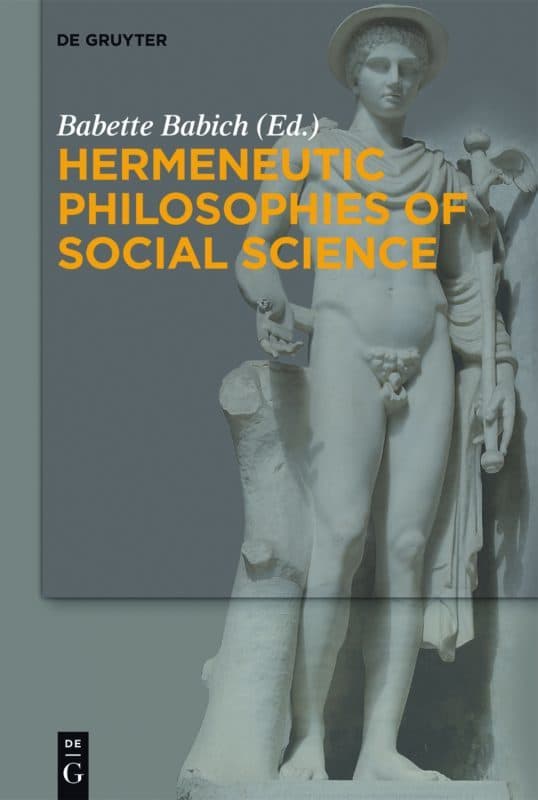Robot Sex, Roombas — and Alan Rickman
Robot lovers, given current technology, are not particularly good at being robots, much less at being Alan Rickman. The good news is: as cyborgs we don't really need actual robot technology in order to have robot lovers.
Robot lovers are the newest transhumanist, posthumanist, humanity 2.0 obsession.
To be sure, robot lovers are a bit virtual, but this is apparently no obstacle to talking about them. Virtual things are things we don’t have but wish we did. And so, because we can’t really do anything else with them, we think about them, write about them, argue about them, devise possible ethics for them, talk about how good or terrible it might be if people came to prefer them over human lovers or build careers talking about them.
Captivated by the idea of a robot lover, we can set our hearts on acquiring such a thing. This can involve, for those who think this is just around the bend, setting up savings accounts, hoping to be able to buy one someday.
Hitches seem par for the course when it comes to future tech. Thus we still don’t have jet packs in any usable form that does not involve crash helmets, ditto: the flying cars that were a staple of so much science fiction, much less the robot Maria in the city of tomorrow depicted in Fritz Lang’s Metropolis circa 1927. But, optimists till the end, cryogenics offers us the chance to freeze our decapitated heads for the time when replacement bodies exist and we can be thawed out and reanimated to enjoy the robot lover of our dreams.
Descartes and Sex Toys
To be sure: robot lovers or mechanical automata have been around for a while. So too the more garden-variety kind of masturbatory accessory or sex toy, as certain ancient artifacts fall into this category.
In 1649, almost four centuries ago, the same philosopher René Descartes, who made an argument about the trouble we would have in distinguishing an automaton from a human being a central component in his philosophy, had himself, so the story goes, constructed a female automaton of his own.
When he was compelled to travel to Sweden to teach philosophy to the Queen, he took it with him for companionship at sea and, one supposes, in Sweden too — but superstitious (or jealous) sailors threw it overboard and that ended that.

The mechanical Francine would be debated. To this day, some biographers deny she ever existed, which points to our current inability to even imagine the sophistication of clockwork automata and the passion for the same in the 17th century and earlier.
Recently, the efforts of a number of historians of art and science like Horst Bredekamp have helped advance our imaginative capacity in this regard. But accounts of automata are even older, and mechanically possible, as the mysterious Antikythera mechanism demonstrates. No one less than Plato tells the tale of Socrates’ ancestor Daedalus, skilled enough to build automata designed to return to their maker (permitting Daedalus to sell the same machine again and again) and necessitating chains to secure them for customers who wished not to have to buy them twice.
The Alan Rickman Function
“In addition to making love, a robot lover could also do useful things. Like cooking and cleaning, changing lightbulbs and such.”
Today’s robot sex-dolls, like Descartes’ personal automaton, are sex-dolls for men. Indeed, even the anatomically male versions are sex-dolls for men too.
But why?
In theory, after all, a woman might be well delighted to have a robot lover, and one is almost tempted to imagine that a robot lover might even be, potentially, perfectly programmable, a perfect lover, especially for women.
In addition, a robot could do all the good things one might hope a lover might do: in addition to making love, in just the way that one wished, when one wished and as long and as often as one wished, all very good things indeed, a robot lover could also do useful things: like opening jars, or getting stuff from the higher shelves down to the counter and then, even more importantly: putting it all back again; or like cooking and cleaning, or changing lightbulbs and such, all that in addition to companionship.
Indeed, one might even imagine (this is a virtual exercise) a robot with a Walter Raleigh function as we might call it, casting a cloak as a bridge across rainy puddles or, even better, a robot with an Alan Rickman-as-Colonel Brandon function, capable of carrying one physically (and very romantically) over puddles or up steep hillsides in inclement weather. Or a robot to help with carrying parcels and purses and rucksacks, that too.
You are currently viewing a placeholder content from Default. To access the actual content, click the button below. Please note that doing so will share data with third-party providers.
Robot lovers for women, at the very least should also have deep conversational features, as it would be ideal to have someone to talk to who would want to talk, someone interested in the topic of conversation one might suggest and even someone capable of following topic changes without annoyance.
Perhaps all we need to do is creatively revamp existing AI programs that pretend to be therapists, then mix them up erotically and affectionately with a touch of male Siri. And then, again and again, there would be the sex. Perfect! And for women, that could go on for days so decent battery life is a definite must.
“Again and again, there would be the sex that could go on for days so decent battery life is a definite must.”
The language of teledildonics seems to suggest all this. But not so. Dildonics or the existing industry dedicated to designing and manufacturing sex robots is an industry that is not dedicated to manufacturing vibrators or mechanical dildos, perhaps on the model of mechanical broncos, as one might suppose, but just, and mostly, to robots for guys.
These are glorified silicone sex dolls, diminutive but having all the parts a (nominally) heterosexual man might find useful, not unlike the cheaper, blow-up doll versions.
Immovable Robots
Still no robots, including none on the drawing board, feature the kind of functionality that involves moving on their own. One has indeed to drag them about, which is why the sex robot models themselves are not particularly tall which reduces mass and improves portability.
To this extent, today’s cutting-edge sex robots are capable of even less than the 17th century automata of which Descartes speaks – these were capable of walking – although, on the plus side, it does seem, at least if one judges from video advertisements of these robots, that there might be some vibrating bits, with a heat function, rather like shoulder and neck massage devices one can buy online.
To this extent, sex robots, such as we happen to have them, are robots in name only: they do not walk on their own and what motions they are programmed to have are very limited as is their capacity for conversation. Still they are available and you can buy them. For men, that is – and for women too should they want to buy a doll designed for men, as the manufacturers do not discriminate and are happy to ship them to anyone who can pay, no returns, sanitary reasons, of course. All in production, on sale at increasing costs, up to $50,000, depending on cosmetic features.
“Sex robots are robots in name only: they do not walk on their own and what motions they are programmed to have are very limited.”
Elsewhere I pointed out that a lot of care is involved with maintaining these particular sex toys – which can seem a tad anti-climactic.
Still: none of these sex robots is advertised as having the ability to walk, much less cast a cape across a puddle to protect one’s footwear, nor indeed as having the capacity to carry one – even for short distances – up a hill, with or without rain, let alone as being capable of conversing about poetry or the meaning of life (all of which would be features of the Alan Rickman robot) – or which dress looks best, among the many other things women like to talk about with lovers.
But this immobility also means that robot lovers, state of the art as we have them, or even as we can project them in the next few years, given current technology, are not particularly good at being robots. Not being able to move much on their own is a major fail for a robot.
To this extent, it is unclear just how good they might be as lovers, apart from those customers with a necrophiliac fetish for making love with a non-moving, or only minimally moving, partner that as it happens one must lug about, precisely as one would have to lug about a corpse.
Are we already Cyborgs?
But, say the enthusiasts, we are “already cyborgs,” quoting the theorists as they do.
Indeed: we are already ‘transhuman’ and from this perspective, of course, we can do all the necessary moving ourselves, as we must just in order to have such robot lovers. And part of being transhuman-already, this is the point of Facebook and selfie-culture, is that social media technology can give others the impression that we are more accomplished than we are and thus that we are more than (merely) human.
Apart from social media, don’t we all already do this anyway? For what do we have our hairdressers and our makeup or fancy dress for special occasions? Is the same transhumanist imperative not ultimately the reason we insist on corrections, cosmetic touch-ups? And is it not the reason we prefer to select the photo that appears on our driving licenses?
For job applications, we choose a certain photo – but for an internet dating service we choose another. At the same time, one of the biggest complaints with online dating – the kind of dating that involves dating people you have not met, blinder than blind – concerns this phenomenon and the misleading impressions it can create. Some candidates hope to improve their chances by using a “good” photo of themselves even if it is several years old, an offense that becomes more of a problem when years turn into decades.
Some people use photos that aren’t even their own.
But hey, that too is transhumanism: we want to look our best.
From Robots to Roombas
Hence, we do not happen to have real, walking, talking robot lovers of even the most basic sort. Actually, the closest thing we have to a mobile domestic robot is a Roomba: a spherical self-propelled vacuum cleaner (clearly designed by a man, as rooms, for which the Roomba is seemingly named, usually have square corners, where the dust gathers and where the round Roomba cannot go).
Still, part of the point of insisting that we are cyborgs is that we have the imaginary idea of imaginary robot lovers. And so we do. This is how internet porn works (it’s imaginary, as Slavoj Žižek points out) and people (Lacan noticed this before Žižek) pay for this imaginary ideal.
In Japan, where Anime means that robot allure has a well-established, if still virtual, presence in the comic book imaginary realm, there are apps that permit Japanese business men to book holidays for themselves and their pretend (or ‘virtual’) girlfriends, including holiday meals and lodging.
Hollywood has already been there too with the film Her, starring Joaquin Phoenix and Scarlett Johansson, as a Siri style voice. And if Star Wars gave us a rolling trash can, not unlike the Roomba in motile capacity, R2-D2, and the golden C-3P0, Star Trek – at least the next generation and Star Trek Voyager – improved on Dr. Smith’s Lost in Space robot nemesis who merely rolled and waved his arms, with fully human-like figures like Data and Seven of Nine.

Thus it hardly seems that we need actual robot technology in order to have robot lovers if an app will do the trick. After all, the beauty of a robot lover, real (if we can work out the tech bits) or imaginary, app style, is that robot lovers are not real lovers. We are dealing with perfection because we are only dealing with our own imaginary desires.
Films like Ex Machina and television shows like Westworld do seem to explore the downside.
In Ex Machina, uncannily, the robot with a developed artificial intelligence, virtually human, seems to have its own all-too-real plans for itself, plans that don’t include the human male lover, which is probably the biggest shock in the film. And if this was not the subtext of Bladerunner, which after all did not vary the Pinocchio story, it was the point of The Matrix.
“But, grammar still matters, we do have killing machines: that’s the definition of a drone.”
We do not even have beta models of machines capable of making love – these are, please pay attention to the grammar, not the same as machines one might be able to make love to. After all, one can make love to statues: the ancient Greeks excelled at that and were so good at it that they turned the practice into a religion. But, grammar still matters, ergo it is significant perhaps that we already have live, and all-too-mobile, airborne killing machines: that’s the definition of a drone.
In sum, if we don’t have actual walking and talking robot lovers, able to make love, what we do happen to have is the app. Never mind the folks who wish to hold out for the Walter Raleigh, coat across the puddle models or the Alan Rickman uphill in the rain carrying models.
No need to wait for that: the ideal of robot love corresponds to its one-sided malleability and non-reciprocity and that is just what we have when we send a text.
Will we get ideal robot lovers?
Texting has its own culture, and gives us companionship on demand, when we want it, just the way we like it. Alas, like Twitter trolls, there is a nearly inevitable sexism here. Hence what it means to be attractive to others includes body-optimization, even if you don’t ‘see’ anything but a text.
The ideal ‘friend’ in texting (like the ideal voice for a GPS program) is an ideal girl-friend: young, friendly, nothing complex, bubbly personality, no troublesome depths.
If the biotech enhancement does not (let us always say: as yet) exist beyond the cosmetic, all of our debates depend upon our conviction that the technology for full-body replacement is right around the corner.
Will we get ideal robot lovers for ideal erotic encounters with options for opening jars, poetic conversations, and an uphill carrying function? Or will we simply find ourselves conforming to someone else’s ideal just to please a date we have yet to meet, or retain a human, all-too-human lover with other friends on the line?
Maybe there’s an autofill app to keep our real lovers captivated until the mobile, android style robot lovers are online.
[Title Image By D J Shin (Own work) [CC BY-SA 3.0 or GFDL], via Wikimedia Commons.]
